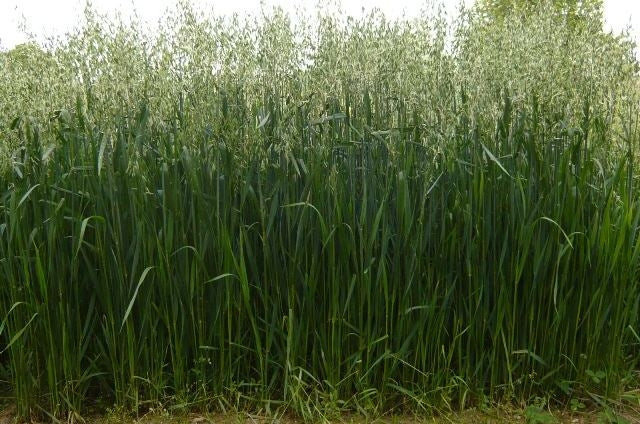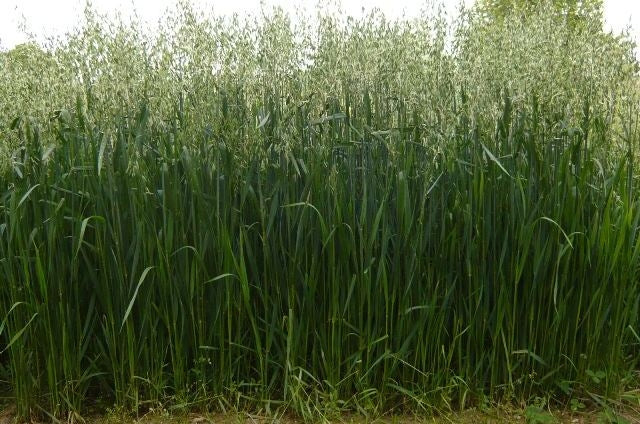WHITE OATS - ORGANIC DRESSED
Have a question?

WHITE OATS - ORGANIC DRESSED
Dettagli
Approximately 15 million hectares of oats are cultivated in the world with a production of almost 26 million tonnes of grain: oats are in 7th place in the cereal ranking, but with a general tendency to decrease.
In Italy the surface area has dropped from 500,000 hectares in 1948 to around 150,000.
The general, spectacular regression of oats in Italy and in the world is due to the decrease in horse breeding, to the lower productivity of oats in fodder units compared to barley, to the limits of use of oats in balanced feed caused by the cellulose content of the grain (which is abundantly dressed).
Oats are still found especially widespread in the southern regions of Italy where perhaps more out of a spirit of tradition than rationality they do not give way to cereals that could conveniently replace them (wheat and barley). However, oats have an undeniable, important advantage in exploiting rotations: that they are less sensitive than wheat and barley to foot pain and septoria.
Oats, as well as being a cereal whose grain is the "fodder" par excellence and is also consumed in various ways by man, is a very important fodder crop in the form of grassland.
Botanical characters
Approximately 90% of the forms cultivated on Earth can be ascribed to the Avena sativa species (or common oat ), the remainder almost exclusively to Avena byzantina (or red oat ). Progenitor species of A. sativa would be Avena fatua, from A. byzantina, the A. sterilis. These wild species of A. fatua and A. sterilis are very fearsome weeds.
Oats have a remarkably developed root system, superior to other cereals in terms of depth and expansion; robust culms, made up of a number of nodes generally higher than that of the other cereals in the group; leaves with wide blade, bluish green, with highly developed ligule, while the agricultural ones are missing.
The inflorescence is a typical, sparse panniculus, with numerous ramifications bearing spikelets with two (less frequently three) flowers; the caryopses are dressed when ripe; the husks are sometimes rested, with a characteristic kneeling stay, inserted on the back of the husk itself. Fertilization is autogamy.
The weight of 1000 seeds is around 25-35 grams, that of the hectoliter is around 40-60 kg. The nutritional value is quite low due to the considerable quantity of fibre: on average 0.7 UF/kg.
Environmental needs
Oats have the highest water consumption of all cereals, excluding rice, so they are particularly susceptible to damage from heat and dry weather, especially during grain harvest: this is why they are a species well suited to cool, humid climates. Of the two species, A. byzantina tolerates drought and high temperatures much better than Avena sativa, so we find them distributed in clearly differentiated environments: in climates (Mediterranean, Middle East) the byzantina, in cool ones (Central and Northern Europe) the sativa.
Even the wild oats that are found to infest cereals have different habitats: in northern Italy A. fatua, in the central southern one the A. sterilis.
Oats are very poorly resistant to cold, so almost all oats in the world are grown in spring sowing, with the exception of hot-arid climates where they are sown in autumn. Minimum temperatures of the order of -10°C are fatal for spring varieties, while for autumn varieties the threshold is -14°C.
As for the soil, oats are much more adaptable than any other cereal: to lean or sub-acid soils, very compact or very loose (provided there is no lack of humidity in these), too soft because they are rich in poorly decomposed organic substance (therefore excellent for clearing moors, woods, meadows, etc.). It is less adaptable than wheat to the salinity of the soil.
Being very resistant to foot pain, oats adapt well to stubble.
Variety
The main objectives of oat genetic improvement are resistance to lodging, to force nitrogen fertilization, and to cold, to be able to sow in autumn.
The genetic improvement of oats has not been developed in Italy like that of wheat. Therefore, the Italian varieties available today are few and still not satisfactory; most of the oat varieties registered in the National Register are foreign, of Northern European origin: but these, being selected in Nordic countries where sowing is always spring, do not resist the cold and therefore are not suitable for autumn sowing, and for furthermore they are unacceptably late.
Cultivation technique
Autumn sowing must be done earlier than wheat and barley itself: therefore in October; the spring one, in March-April.
The most advisable quantity of seed is 120-150 kg/ha, adopting lower densities in the case of early sowing.
Nitrogen fertilization must be commensurate not only with the fertility of the soil and the climate, but also with the resistance to lodging of the varieties used. The maximum doses applicable to the cv. Ava, they are 60-80 kg/ha of nitrogen; on the other varieties, which are more lovable, 30-40 units are the maximum that can be given. The response of oats to nitrogen fertilization is even more spectacular than in other cereals.
The sebum content is similar to that of wheat (obviously with the exclusion of avenicides).
Collection and use
With good cultivars, 4-5 t/ha can be achieved in excellent conditions.
Yields of 3.5-4 t/ha are considered good.
Consider that the grain in the best case scenario, i.e. regular filling of the kernels, is made up of 25-30% of the giumelle that cover them: in the very frequent case that the grain has been hindered by the lack of water, the covering portion it can also increase much beyond the percentages indicated.
Adversity and parasites
The main non-parasitic adversities are the following: winter frost which, when it arrives early or abruptly, can cause the destruction of autumn sowing; the lodging which most of the available varieties do not resist satisfactorily; the squeeze, frequent given the lateness of the species and its high water consumption, however the "squeeze" effect is not perceived in all its severity, given that the grain is dressed.
The main parasitic adversities of oats are charcoal (Ustilago avenae), rusts (Puccinia coronata avenae and P. graminis avenae), powdery mildew (Erysiphe graminis) and nematodes: Ditylenchus dipesaci or culm eel, and Heterodera avenae or eel of the roots.
Against cryptogamic diseases we must focus on genetic resistance; against nematodes all you have to do is avoid returning the oats successively to the same field.


